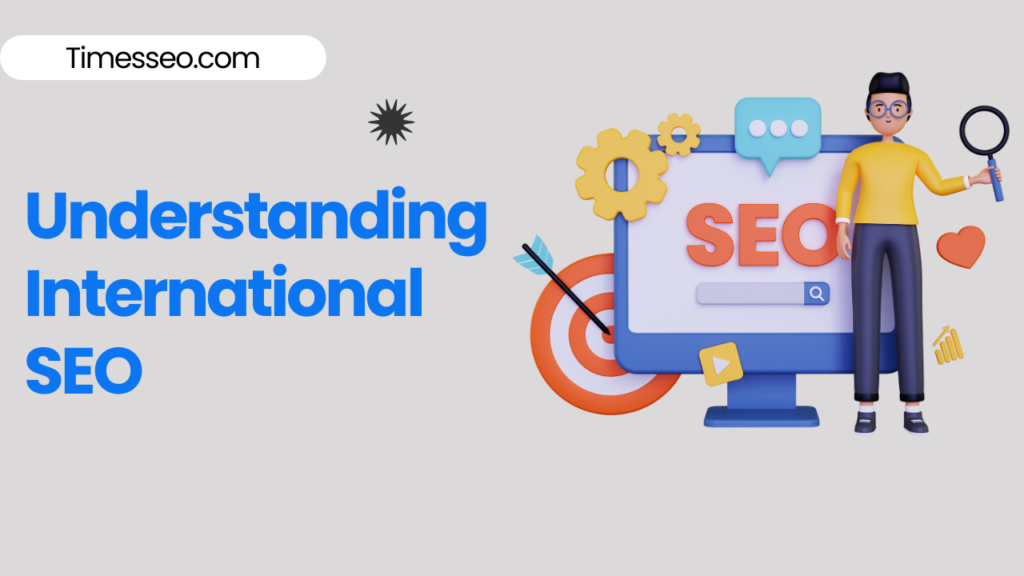
How to Customize Content with International SEO Best Practices
Discover how to tailor your website content for global audiences in our in-depth blog post, “How to Customize Content with International SEO Best Practices.” Learn how to implement hreflang tags, conduct region-specific keyword research, and localize your content effectively. These international SEO best practices will help you boost visibility, connect with diverse markets, and drive global traffic like a pro.
Table of Contents
Introduction
Ever wonder why your amazing blog post works wonders in the U.S. but seldom gains traction in Brazil or Germany? That’s where International SEO comes in. It’s not just about translating your content—it’s about customizing it so that people from different regions feel like you’re speaking directly to them.
International SEO is your passport to global traffic. But without tailoring your content to each region, you’re basically handing out English menus in a sushi bar in Tokyo—technically correct, but completely off the mark.
Understanding International SEO
Difference Between Local and International SEO
Local SEO focuses on optimizing for a specific geographic location, like “coffee shop in Brooklyn.” International SEO, however, aims at optimizing your site for multiple countries and languages.
When Do You Need International SEO?
- If your traffic is coming from multiple countries
- If you sell globally or operate in multilingual regions
- If your competitors are already optimizing internationally
Benefits of Optimizing for a Global Audience
- Increased traffic and conversions from international markets
- Stronger brand visibility across borders
- Better user experience through culturally relevant content
Targeting the Right Countries and Languages
Geo-targeting vs Language Targeting
Geo-targeting means focusing on users in a specific country, while language targeting focuses on users who speak a specific language, regardless of location.
Use of Country Code Top-Level Domains (ccTLDs)
Example:
- .de for Germany
- .fr for France
- These let users and search engines know that your material is intended for a certain area.
Subdomains, Subdirectories, and Parameters
- de.yoursite.com (Subdomain)
- yoursite.com/de/ (Subdirectory)
- yoursite.com?lang=de (Parameter – least preferred)
Keyword Research for International Markets
How Search Intent Varies by Country
People in the UK search for “holiday,” while Americans type “vacation.” It’s all about understanding local lingo and intent.
Tools for International Keyword Research
- Semrush
- Ahrefs (with filters by country)
- Google Keyword Planner with location settings
Translating vs Localizing Keywords
Translation may give you the literal meaning, but localization gives you the real meaning in context.
Crafting Region-Specific Content
Cultural Relevance in Content Creation
Use metaphors, jokes, and analogies that make sense locally. A Super Bowl reference might fall flat in France.
Tone, Examples, and References That Resonate Locally
Humor, slang, or formality—all of these vary by culture. Adjust your tone accordingly.
Use of Local Events, Holidays, and Trends
Tapping into local events like Diwali in India or Singles’ Day in China can boost relevance and engagement.
URL Structure and Hreflang Tags
How Hreflang Works
Google is informed by hreflang the language and area a page is intended for. It avoids duplicate content issues and improves visibility in the right regions.
Common Hreflang Mistakes
- Forgetting to add self-referencing tags
- Using incorrect country codes
- Missing return links
Best URL Structures for International SEO
- ccTLD: yourwebsite.fr
- Subdirectory: yourwebsite.com/fr/
- Subdomain: fr.yourwebsite.com
Localizing Technical SEO
Site Speed Across Different Regions
Use CDNs (Content Delivery Networks) like Cloudflare to ensure fast load times worldwide.
Mobile Optimization for Global Users
Different countries have different device preferences. Ensure your site is responsive and fast on all screen sizes.
Setting Up Multilingual Sitemaps
Separate sitemaps for each language help search engines crawl and index your content effectively.
Choosing the Right CMS and Plugins
WordPress Multilingual Plugins
- WPML
- Polylang
- TranslatePress
Shopify and Magento International Options
Both platforms support multi-language and multi-currency setups with the right extensions or built-in tools.
Managing Duplicate Content Issues
Same Language, Different Countries
Even if you’re writing in English for the U.S. and U.K., slight differences in vocabulary and spelling help avoid duplication.
Canonical Tags and Their Role
Use rel=”canonical” carefully. Hreflang is preferred when targeting different regions with similar content.
Link Building with a Global Approach
Building Backlinks from Local Domains
Earn links from regional directories, blogs, and forums to boost local trust.
Partnering with Local Influencers and Publishers
Collaborate with content creators in target countries to gain authentic mentions and links.
Leveraging Local Search Engines
Yandex, Baidu, Naver – Know Your Market
Google isn’t king everywhere. China uses Baidu, Korea uses Naver, while Russia uses Yandex.
Optimizing for Non-Google Platforms
Each engine has unique ranking factors—learn and adapt your strategy accordingly.
Tracking and Measuring International SEO Success
Setting Up Google Search Console by Country
Create separate properties for each domain or subdirectory.
Analyzing Traffic with Google Analytics
Use location and language reports to track performance by region.
KPIs to Watch for Global SEO
- International traffic growth
- Bounce rate by language
- Conversions by country
- Average time on site
Content Translation vs Localization
Why Translation Alone Isn’t Enough
Literal translations often miss emotional and cultural nuance. Localization adapts your message to make it feel native.
Localization Examples That Work
- Local currencies and units
- Country-specific offers or shipping policies
- Visuals that match local culture
Implementing International Schema Markup
Rich Snippets for Multilingual Pages
Use structured data in the right language to enhance listings in SERPs.
Enhancing CTR with Localized Metadata
Meta titles and descriptions should be localized—not just translated—for higher click-through rates.
Common International SEO Mistakes to Avoid
Ignoring Local Search Habits
Each country has unique search behaviors. Research is essential.
Using Machine Translation Without Edits
Auto-translations are a recipe for awkward, unreadable content. Always proofread.
One-Size-Fits-All Content Strategy
What is effective in one market may not be in another. Tailor your approach.
Conclusion
Going global sounds exciting—but it’s not just about going multilingual. True international SEO is about understanding your audience, customizing your content, and respecting cultural nuances.
From hreflang tags to local keyword research and beyond, every detail matters. Mastering international SEO best practices will unlock new audiences and help your brand become truly global.
Frequently Asked Questions
Use subdirectories (e.g., /fr/, /de/) along with hreflang tags to manage content for different regions effectively.
Yes, especially if you want to connect with users authentically. Localized content performs much better than translated text.
Implement hreflang tags correctly and customize your content slightly for each region.
It helps Google serve the right version of your page to users based on their language and location.
Yes, but always review and localize the output. AI can help speed things up, but human input is key for quality.
Table of Contents
Popular Posts
-
 Affordable Technical SEO Audit for Small Business: A Complete Guide26 Jun 2025 Blog
Affordable Technical SEO Audit for Small Business: A Complete Guide26 Jun 2025 Blog -
 How to Get an Affordable Technical SEO Audit for Small Business27 Jun 2025 Blog
How to Get an Affordable Technical SEO Audit for Small Business27 Jun 2025 Blog -
 The Ultimate Local SEO Audit Checklist for Startups28 Jun 2025 Blog
The Ultimate Local SEO Audit Checklist for Startups28 Jun 2025 Blog -
 Local SEO Audit Checklist for Startups: A Beginner’s Guide28 Jun 2025 Blog
Local SEO Audit Checklist for Startups: A Beginner’s Guide28 Jun 2025 Blog -
 Top On-Page SEO Audit Steps for Service Websites Every Business Should Know29 Jun 2025 Blog
Top On-Page SEO Audit Steps for Service Websites Every Business Should Know29 Jun 2025 Blog -
 Technical SEO for WordPress: The Ultimate Beginner’s Guide01 Jul 2025 Blog
Technical SEO for WordPress: The Ultimate Beginner’s Guide01 Jul 2025 Blog -
 The Impact of On-Page SEO Audit Steps for Service Websites on UX01 Jul 2025 Blog
The Impact of On-Page SEO Audit Steps for Service Websites on UX01 Jul 2025 Blog -
 Technical Mobile SEO Audit Tips for Developers02 Jul 2025 Blog
Technical Mobile SEO Audit Tips for Developers02 Jul 2025 Blog -
 Complete SEO Backlink Audit Guide for Better Google Rankings03 Jul 2025 Blog
Complete SEO Backlink Audit Guide for Better Google Rankings03 Jul 2025 Blog -
 Boost Your Rankings with Technical SEO for WordPress01 Jul 2025 Blog
Boost Your Rankings with Technical SEO for WordPress01 Jul 2025 Blog






